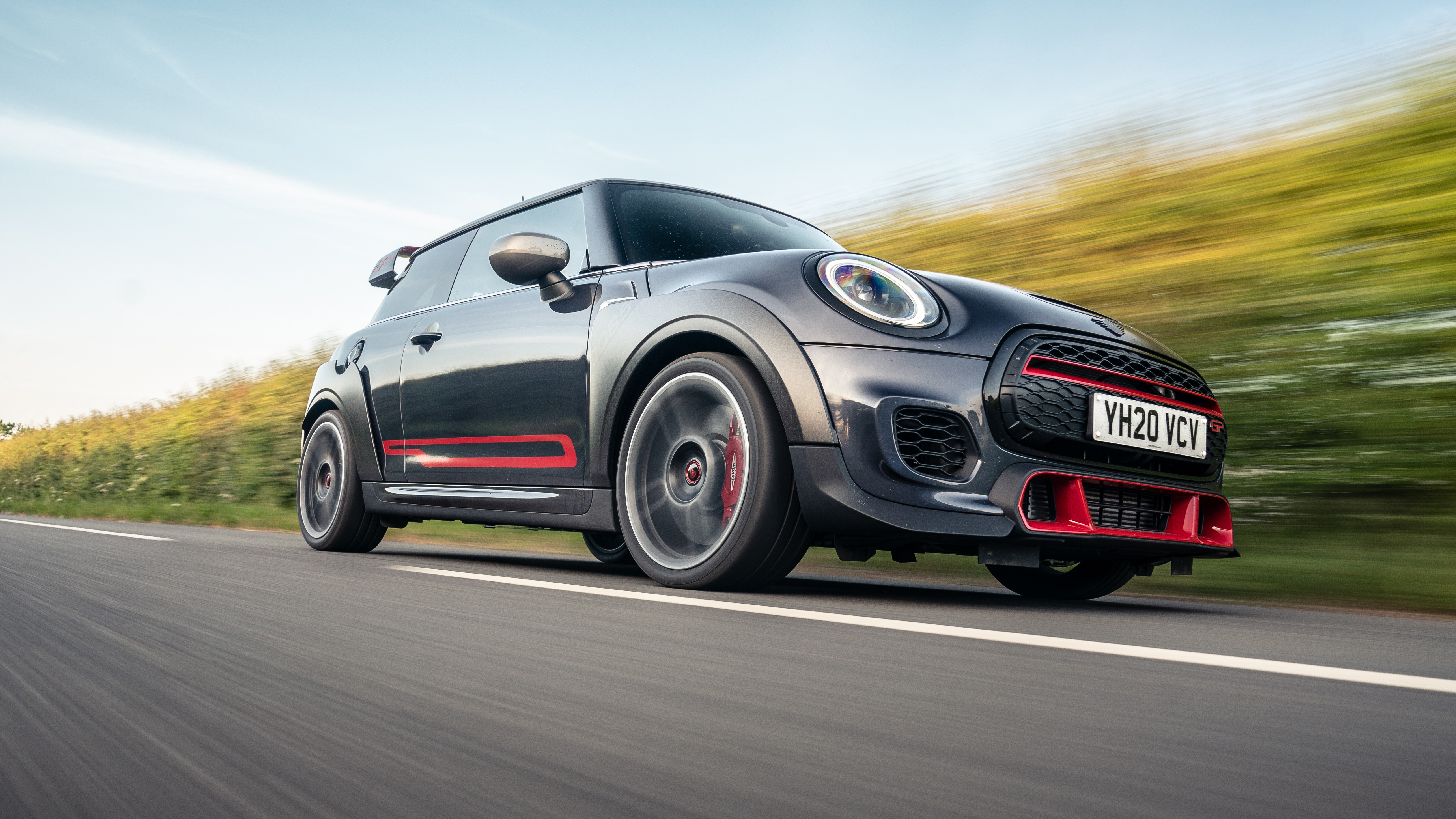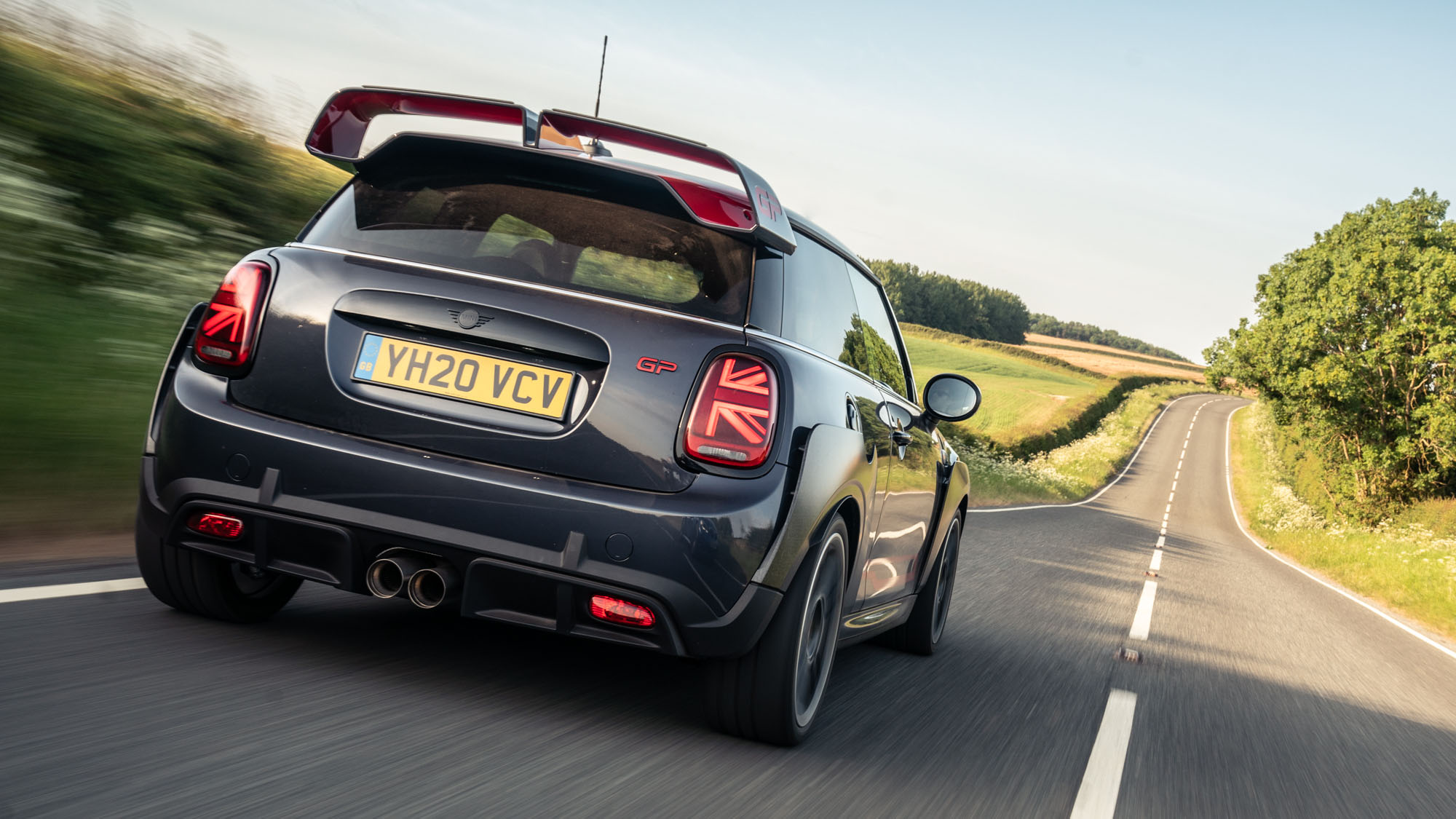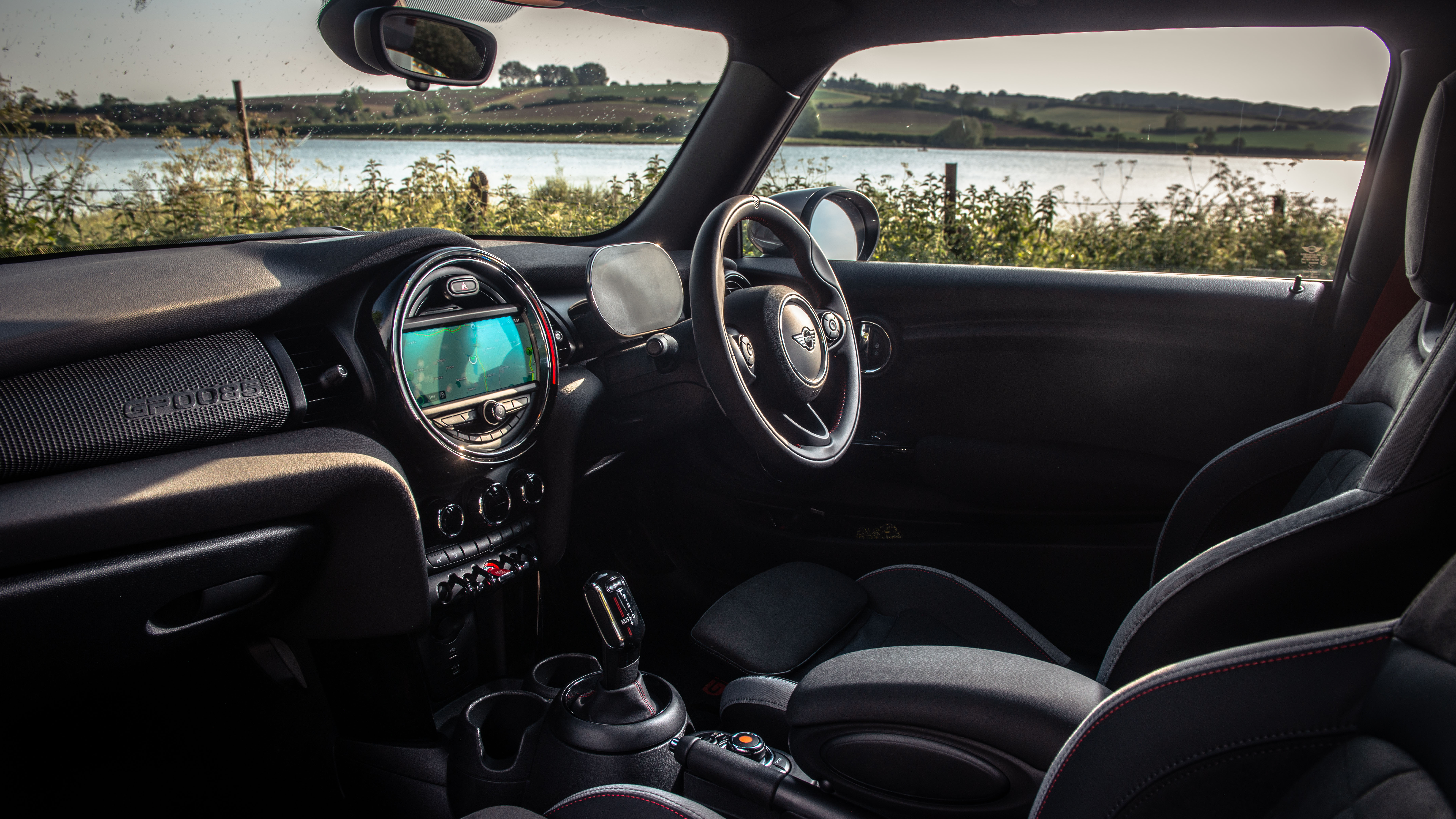
Driving
What is it like to drive?
Starting the GP3 is fun: like all Minis, rousing the engine with a well-sprung red toggle switch right next to the gear lever is just a nice touch. You get a wholly unnecessary flair of revs from the 2.0-litre, turbocharged four-cylinder motor, but the exhaust only crackles if it’s already warmed through.
The first thing likely to upset the faithful is how you set off. Normally you’d slot first via an oversized gearknob atop a typically snickety mechanism. In the GP, you slide a standard BMW lever two clicks backward until a ‘D’ pops up on the screen. It’s an automatic. There’s no manual option, and instead of using its seven-speed twin-clutch gearbox, Mini has gone for an eight-speed slusher, because of the M135i engine that comes ready-mated.
Thanks to reinforced pistons, a heavy-duty crankshaft, more boost pressure and uprated fuel injectors, the 302bhp / 332lb ft on tap is a massive lift from the JCW’s already potent 228bhp. Mini claims 0-62mph in 5.2 seconds, putting the GP among the fastest front-wheel drive cars in the world. The top speed isn’t limited, so despite having the aerodynamic properties of a Mardi Gras float, it’ll romp up to 164mph flat out.
It’s not a great-sounding engine – the noise is synthetic and buzzy, like a wasp investigating a baby monitor – and emissions filters smother the outrageous small arms fire we’re used to from a Mini exhaust. But the speed it conjures is bonkers. Off the line, it’s among the world’s fastest front-drive cars, but in gear a GP will demolish machines costing twice its huge £33,895 price.
It’s not long before the GP makes it abundantly clear it’s not like other Minis. It has a totally different personality – an ice-cool, efficient, eminently… German precision.
Where a standard JCW smokes away power in wheelspin and muddles around with torque-steer, the GP claws monumental purchase out of the road. It is a rabidly fast bit of kit, once you’re through the good ol’fashioned turbo lag.
Apparently maximum torque is on hand at 1,750rpm, but ideally you want 3,000 revs spooled up before it really feels like the GP’s on boost. Then it vaults through the gear in one big spring-loaded bound, dispatching straights with an Audi RS3-like disdain.
The ‘box allows you to lazily hold the left paddle and let the downchanges slot home when the computer decides. Foolproof, but anti-social. Demand to override and the changes are rounded-off, or ignored until the ones ‘n’ zeroes say so.
Mini’s argument is the same one that’s rife across the fast car industry: paddles make the car faster around a track (it’s quicker around the ‘Ring than a BMW M2), it’s easier to drive for a wider audience, letting Billy no-skills keep both hands on the wheel all the time. But it’s come at the same cost other victims of a manual-ectomy – keeping the driver at arms’ length from the action.
And the GP has the same un-Mini-ish attitude to corners as it does to straights. They’re inconveniences to be eaten and dispatched. The GP simply hasn’t heard of body roll. Can’t comprehend understeer. You can chuck it in, feel it stick, and fully lift off the throttle, but it won’t wiggle. The sheer amount of grip the GP generates is spectacular, and it’s not even wearing a particularly trick tyre, or apparently bending the air to its will.
Turn all the traction control off. Find a bend with some dust on the apex. It won’t care. The Mini GP doesn’t have that sense of humour. It looks like a clown, but it’s more Joker than Ronald McDonald. The GP’s all about superhero looks, but it’s no laughing matter.
Featured

Trending this week
- Car Review
BMW 1 Series






